Here are some issues with the HLA WFC3 products that have lead to spurious detections in the DAOphot and SExtractor source lists.
![]() In DR7.2, most of these effects are well
idenitifed, and affected detections have been marked by the flagging algorithm, and excluded in
the trimmed source lists. There are cases in which an unsatisfactory
number of image artifacts (or related problems) are missed by the
flagging algorithm. For those cases, the vetting process eliminates the
trimmed lists all together.
In DR7.2, most of these effects are well
idenitifed, and affected detections have been marked by the flagging algorithm, and excluded in
the trimmed source lists. There are cases in which an unsatisfactory
number of image artifacts (or related problems) are missed by the
flagging algorithm. For those cases, the vetting process eliminates the
trimmed lists all together.
Very large (up to 50K) number of sources in DAOPhot lists. Often occurs in regions with marginally resolved stellar populations (the example below is from M82).
In many cases (Example 1.1) the sources appear legitimate, often associated with a significant signal peak over bright background. Although the photometric parameters - and even the identification - of individual sources are likely fragile, such source lists are deemed to carry useful information and therefore are published.
However, in other cases (Example 1.2) a significant fraction of the sourcs do not correspond to meaningful peaks in the signal level. Such source lists are not published and are slated for reprocessing.

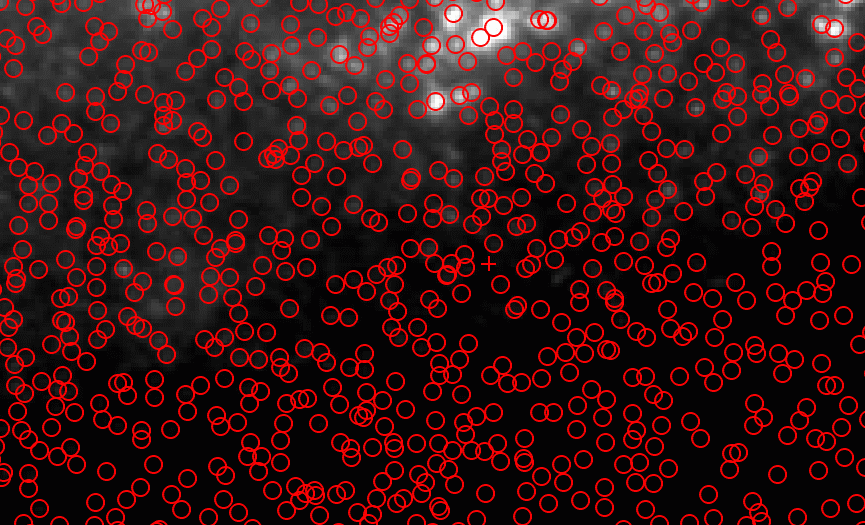
We are experimenting with automatic ways of dynamically changing the DAOPhot detection threshold to handle correctly images with large variations in underlying brightness. Overall, problems like those of Example 1.2 are rare, affecting fewer than 1% of the images.
SExtractor source lists occasionally show up to a few tens of spurious sources near the transition between regions with valid data and with no data. A handful of such sources are found in a significant fraction of the images.
The likely cause is the non-zero background in HLA-processed WFC3 images and the way SExtractor handles the background. Note that we do use SExtractor's internal flagging procedure, but as some of the pixels associated with these sources land on valid data, the source is not rejected.
Source lists with this problem are usually published. The number of spurious sources is usually small, and they are easily identified by their location and properties.

Improved use of SExtractor's own flags can easily reject these sources.
Changes in the white light image computation to remove the background drop will have other beneficial effects on the behavior of SExtractor.
For images with non-uniform coverage, DAOPhot finds more sources (many spurious) in regions of lower depth. The reason is that DAOPhot applies a uniform detection threshold, and the threshold appropriate to the full depth triggers on noise peaks where the noise is higher. This is often the case near the edges of the valid image, as dithering strategies often leave a border with lower depth near the edges. The problem is present in both IR and UVIS images, but is more serious in the latter when regions of lower coverage may have only one or two images per filter, leaving significant number of unrejected cosmic rays.
The problem is less prevalent in SExtractor lists, since Source Extractor allows the use of a local noise image, and thus an appropriate threshold can be applied in regions of different depth. However, unrejected cosmic rays can be a problem for Source Extractor as well in UVIS images.
The problem is present to some extent in a large fraction of images. However, in many cases it results in a modest number of sources (Example 3.1) and thus the lists can be considered useful. In other cases (Examples 3.2 and 3.3) the number of spurious sources is large enough to mar the usefulness of the source lists, which are therefore rejected.


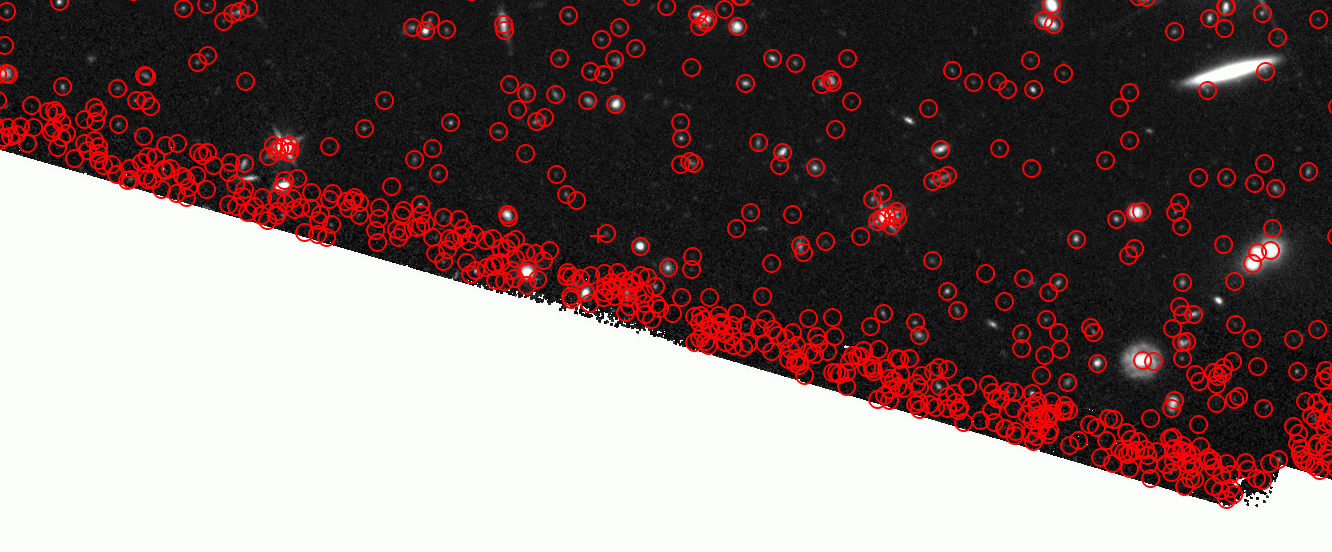

Currently DAOPhot uses a median-divided image to prevent an excessive number of sources to be found in bright areas. An updated combination including a noise image might ameliorate this problem.
Post-processing flags and photometric indicators can be used to identify and flag sources that are not significant on the basis of the local noise.
Flagging of sources in regions with only one contributing image in UVIS would help remove spurious sources caused by unrejected cosmic rays.
Most bright stars (with visible diffraction spikes) produce tens of spurious source detections within 30 pixels of the source and to a lesser extent along the diffraction spikes.
These detections are due to both secondary PSF peaks (e.g., along the Airy rings) and to increased noise due to the high background. They are more prevalent in IR images but occur in UVIS images as well.
In many cases, these source lists are published as long as the number of spurious sources is modest (Example 4.1), since the origin and nature of the spurious sources is fairly evident and the sources detected elsewhere in the image contain useful information. to the user. However, if spurious sources are very numerous and a significant fraction of the total source counts (Example 4.2), the source list is rejected.

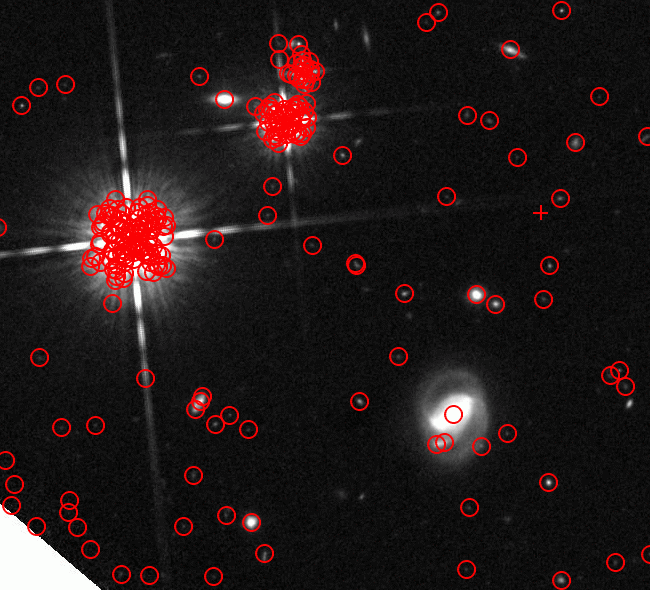
Flag sources on the basis of distance from and luminosity of bright stars, as well as position of diffraction spikes.
Source detection can also be improved by algorithms that account for higher noise in regions of high background in DAOPhot.
In some cases, we find an excessive number of spurious Source Extractor detections near bright stars, similar to those of Problem 4 but with a different pattern (Example 5.1). The problem is much less common than DAOPhot's Problem 4, and seems to occur primarily in UVIS images.
It is not completely clear why this problem arises in certain images and not in others. In most cases, secondary peaks near bright sources are either included by Source Extractor with the main source, or fail to pass the noise threshold which is higher in Source Extractor near bright stars.
Since the problem is not fully understood, we generally reject such images, unless the number of spurious sources is negligible.
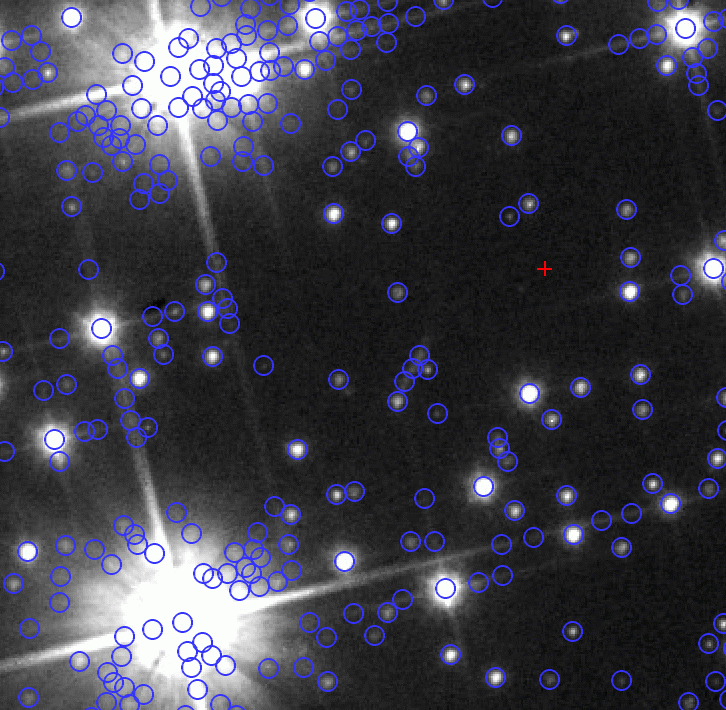
Investigate the problem further to understand its cause and identify a fix.
Combined total ("white light") images generally retain image defects present in the component images. The reason and properties of such image defects vary widely, but they are often related to a small number of images per filter, such that pixel artifacts (hot/bad pixels, persistence, cosmic rays) are not well rejected in each filter's combination. For example, the images in Examples 6.1 and 6.2 each result from four exposures, two in F475X and two in F600LP; two exposures per filter are not sufficient to properly reject pixel-level defects.
These image defects usually do not produce detections in Source Extractor, but they do in DAOPhot. The defects often appear in patterns, e.g., lines in the two Examples. Usually inspection of the total image clearly indicates the source of the spurious detections, but not necessarily the underlying image quality issue.
Depends on the number and prominence of spurious sources. If the number is small, the source list is published; if too many spurious sources are present (amounting to tens of percent of the total counts), the list is rejected, since users will not generally have an easy way of identifying such sources.
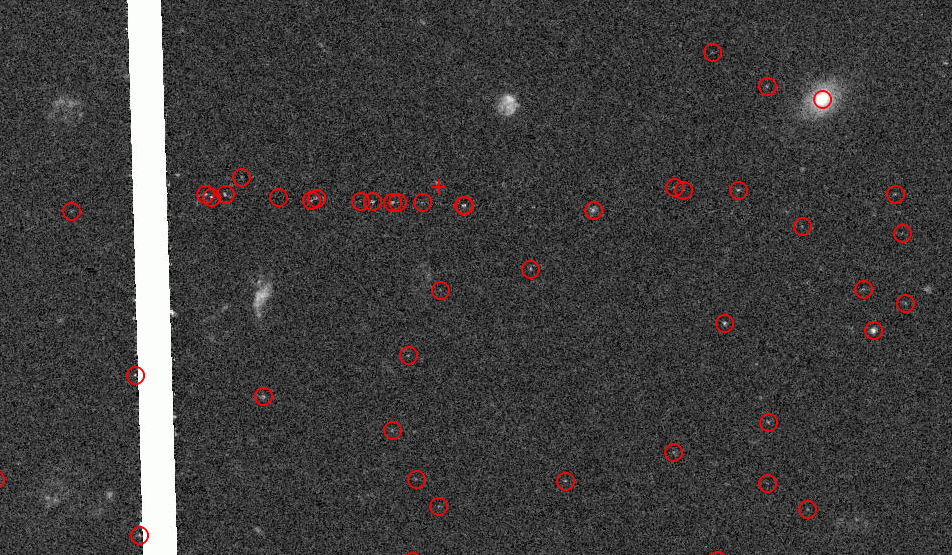


Since these spurious sources derive from image defects, it may be possible to use improved filtering based on measured source parameters (size, shape, concentration index) to differentiate them from real astronomical sources.